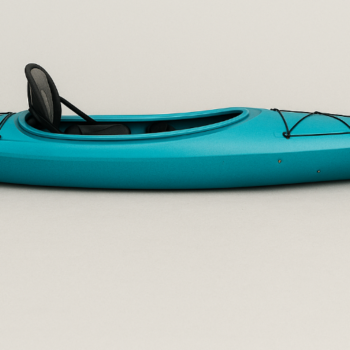Discover
Mangrove Environments
Australian Mangrove Environments
Australian mangroves are important coastal ecosystems in the intertidal zones of sheltered bays, estuaries, and tidal rivers. These environments are dominated by salt-tolerant trees and shrubs collectively known as mangroves, adapted to living in saline and waterlogged soils.
Mangroves are characterised by complex root systems that provide structural support and a variety of habitats for organisms such as crabs, snails, and fish. The roots also trap and stabilise sediments, reducing erosion and improving water quality by filtering out pollutants.
Mangroves are essential habitats for a range of bird species, including wading birds and shorebirds that rely on the environment for nesting, foraging, and resting. The mangrove ecosystem also supports a variety of commercially and recreationally important fish and crustacean species, such as blue swimmer and mud crabs, prawns, barramundi, bream, and flathead.
Unfortunately, many habitats have been lost or degraded due to land reclamation, urbanization, and aquaculture activities, among other factors.
Conservation and management efforts are critical for protecting mangrove environments in Australia. These efforts include reducing nutrient inputs, restoring degraded habitats, and implementing sustainable management practices to ensure these important ecosystems’ long-term health and sustainability.
Quick Facts
- There are over 40 species of mangroves in the world, and Australia has 39 of them.
- Mangroves provide valuable ecosystem services, such as carbon sequestration, shoreline stabilization, and water filtration.
- Australian mangroves cover approximately 11,000 square kilometres, making it the third-largest mangrove area in the world.
- Mangroves are salt-tolerant trees or shrubs that grow in intertidal zones of tropical and subtropical coastlines.

Exploring Mangroves
Australian mangroves are biodiverse ecosystems that provide critical habitats for a wide range of plant and animal species. They are an important part of Australia’s coastal landscapes, covering vast areas of intertidal mudflats, creeks, and rivers. Visitors to these habitats can explore the intricate network of mangrove trees, roots, and mudflats and witness the fascinating ecological interactions that occur here.
Things to explore in Australian mangroves:
- Spot various bird species that rely on the mangroves for feeding, nesting, and roosting, such as herons, egrets, and ospreys.
- Look for interesting plant species, such as the salt-tolerant mangrove trees and their associated communities of ferns, shrubs, and grasses.
- Observe a variety of marine creatures, such as crabs, mudskippers, and mollusks, that inhabit the mangrove mudflats.
- Take a boat or kayak tour to explore the intricate waterways that cut through the mangrove forests and see the diverse habitats they support.
- Go fishing and try catching a mangrove jack, barramundi, bream, flathead, or other species that inhabit the shallows of the mangroves.
- Speak to rangers and learn about mangroves’ critical ecological and economic roles, such as protecting shorelines from erosion, filtering pollutants, and providing nursery grounds for commercial fish and shellfish species.
Whether you are a nature enthusiast, a bird watcher, or simply looking for a fun and educational outdoor adventure, Australian mangroves offer an exciting and immersive experience that is not to be missed.
Search the Australian
Fish & Marine Life Database
Australian Fish & Marine Species Identification – Freshwater & Saltwater Fish, Sharks, Rays and Invertebrates of Australia.

What are you looking for?
Australia is full of marine life. Discover its incredible diversity by exploring its different species below.

Crustaceans

Reef Fish

Sharks

Invertebrates

Rays

Jellyfish
Explore Other Environments
Australia’s aquatic environments are as diverse as its landscapes, ranging from iconic beaches to tranquil mangroves, estuaries, to fresh and saltwater lakes. Learn more about these diverse habitats.
Lake
Sandflat
Reef
Estuary
Breakwall
Ocean rocks
Rock pool
Beach
Discover More
There’s something for everyone. Dive into our resource library to learn fun facts and get information on everything marine. All your Australian marine life and lifestyle resource in one place!

Runabout Boats: The Versatile Boat Everyone Wants - Here's What To Know
Thinking of buying a runabout boat? Here’s what you need to know. Runabout boats are the go-to choice for...

Buying A Jet Ski: Types, Prices & Tips To Avoid Mistakes
Many People Get It Wrong: Here’s What To Know About Jet Skis. Owning a jet ski opens up a world of adventure —...

Buying a Kayak or Canoe - Get it Right & Avoid Costly Mistakes
Looking to buy a kayak or canoe? Here's what to know. Kayaks and canoes unlock some of the best paddling...

Inflatable Boats & RIBs: Everything You Need to Know Before You Buy
Looking to buy an inflatable or RIB? Here's what to know. Whether you're after a compact paddle dinghy for calm...

Murray Cod Lures and Baits: Catch More Cod With These Proven Winners
Top Murray Cod baits, backed by experts & seasoned anglers. Murray cod (Maccullochella peelii) are incredible...

The Ideal Setup for Trout Fishing in Australia: A Complete Guide
Get Geared Up - Dialling In Your Trout Fishing Setup Trout fishing offers a peaceful escape and a thrilling...

Bait Jig Rig & Variations
Bait jig rigs represent a crucial piece of tackle for the angling world, blending the art of lure design with the...

Running Sinker Rig & Variations
The running sinker rig, also known as the ball sinker rig, is an extremely popular and easy to create rig. There...

